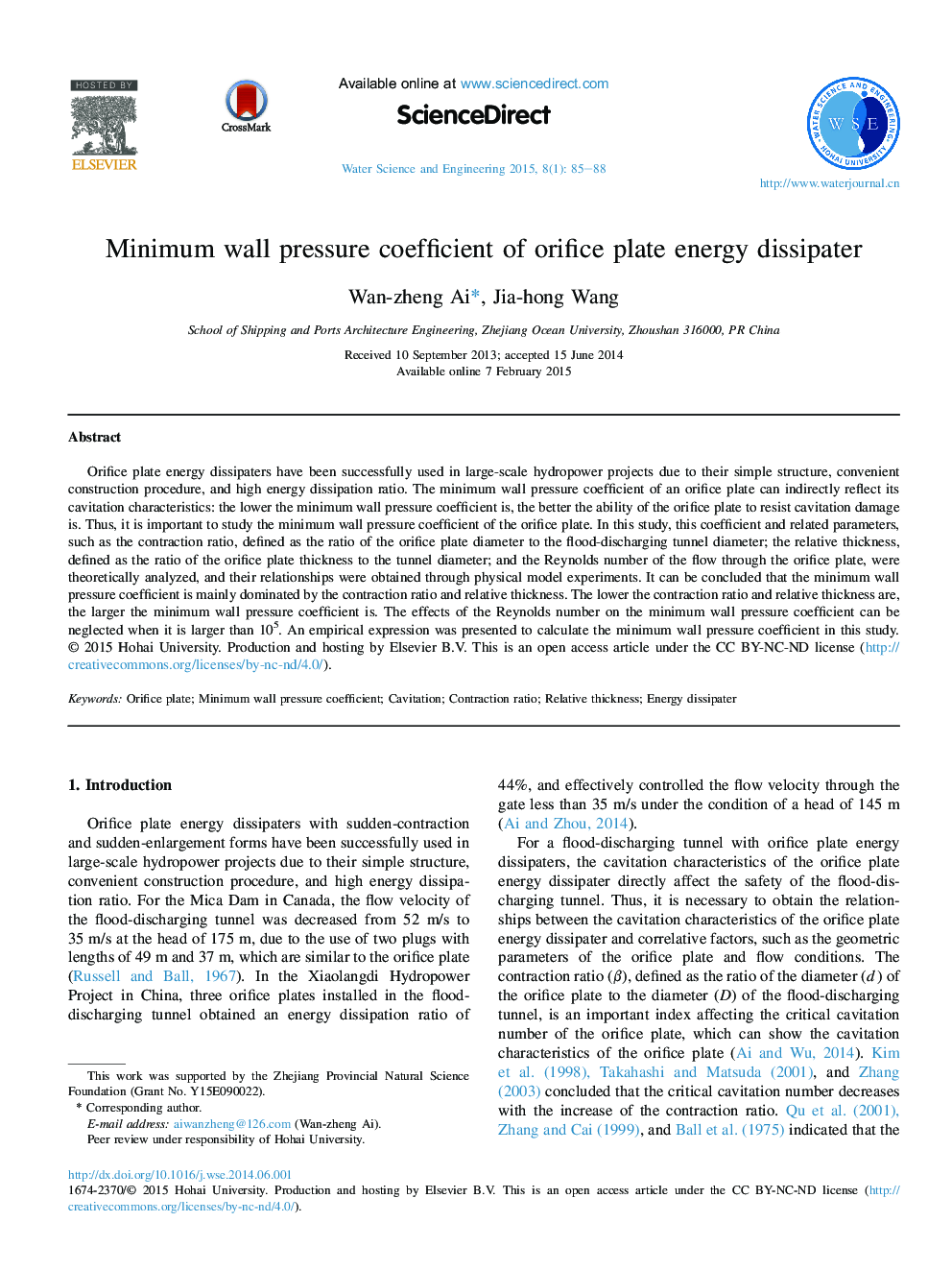| Article ID | Journal | Published Year | Pages | File Type |
|---|---|---|---|---|
| 312858 | Water Science and Engineering | 2015 | 4 Pages |
Orifice plate energy dissipaters have been successfully used in large-scale hydropower projects due to their simple structure, convenient construction procedure, and high energy dissipation ratio. The minimum wall pressure coefficient of an orifice plate can indirectly reflect its cavitation characteristics: the lower the minimum wall pressure coefficient is, the better the ability of the orifice plate to resist cavitation damage is. Thus, it is important to study the minimum wall pressure coefficient of the orifice plate. In this study, this coefficient and related parameters, such as the contraction ratio, defined as the ratio of the orifice plate diameter to the flood-discharging tunnel diameter; the relative thickness, defined as the ratio of the orifice plate thickness to the tunnel diameter; and the Reynolds number of the flow through the orifice plate, were theoretically analyzed, and their relationships were obtained through physical model experiments. It can be concluded that the minimum wall pressure coefficient is mainly dominated by the contraction ratio and relative thickness. The lower the contraction ratio and relative thickness are, the larger the minimum wall pressure coefficient is. The effects of the Reynolds number on the minimum wall pressure coefficient can be neglected when it is larger than 105. An empirical expression was presented to calculate the minimum wall pressure coefficient in this study.
